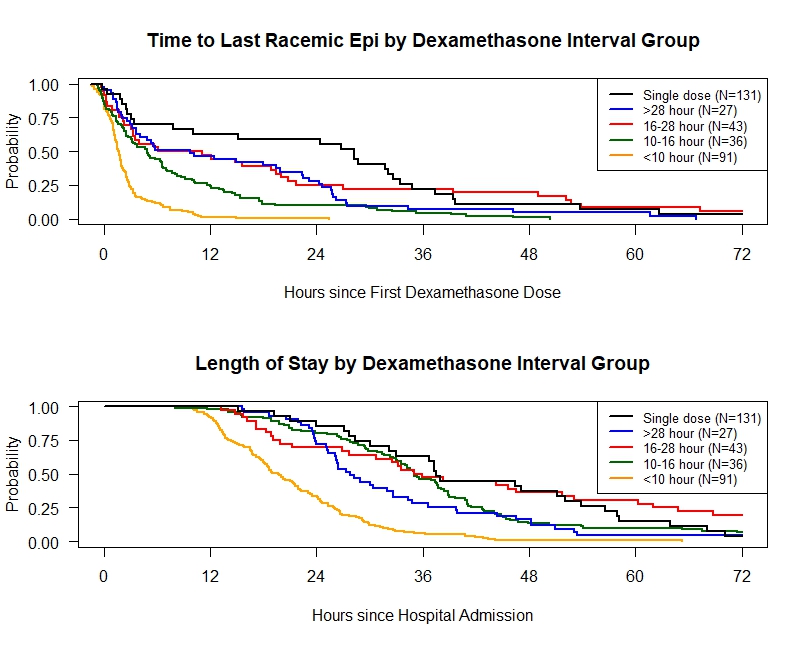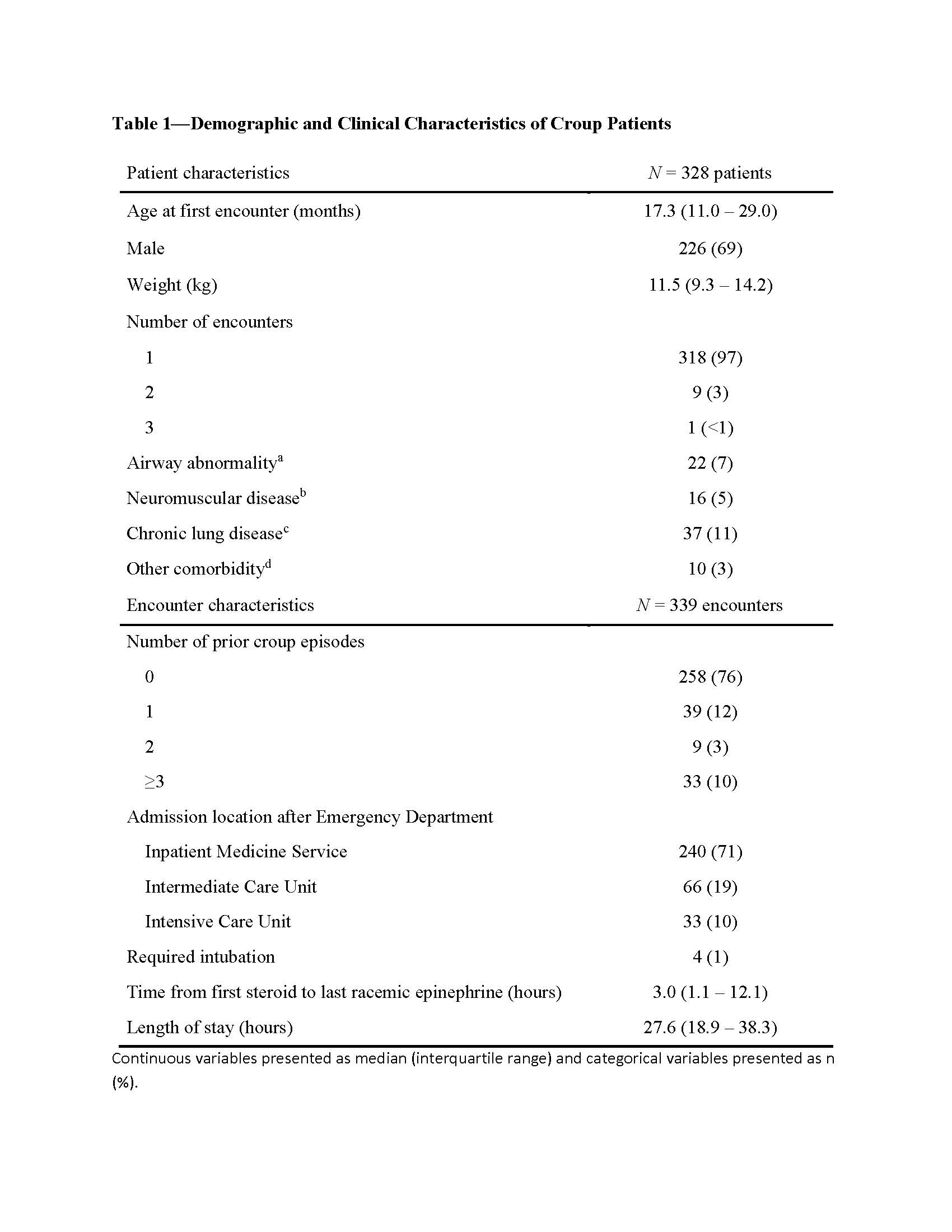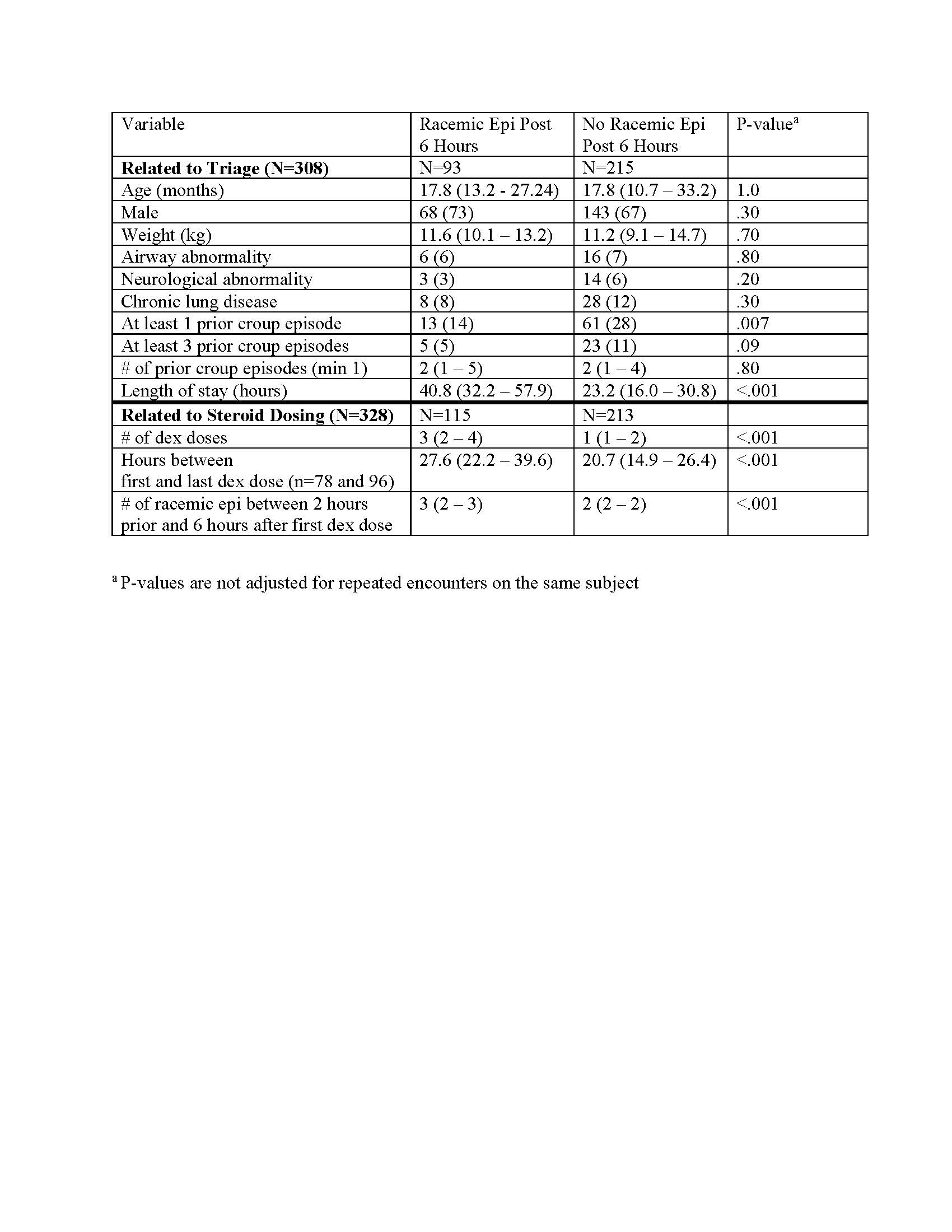Hospital Medicine
Session: Hospital Medicine 1
311 - Retrospective Study of Inpatient Croup: increased frequency of dexamethasone dosing correlates with a shorter length of stay
Friday, May 3, 2024
5:15 PM - 7:15 PM ET
Poster Number: 311
Publication Number: 311.390
Publication Number: 311.390

Christiana M. Russ, MD (she/her/hers)
Medical Director Pediatric Intermediate Care Unit
Boston Children's Hospital/Harvard Medical School
Boston, Massachusetts, United States
Presenting Author(s)
Background: Moderate to severe croup remains a frequent reason for inpatient hospitalization, though a majority of patients receive no further rescue therapies upon admission.
Objective: In this study we aimed to 1) stratify hospitalized croup patients into low- and high-risk groups for needing subsequent racemic epinephrine (RE) doses based on demographics and pattern of RE dosing during the first 6 hours after initial steroid dosing and (2) compare outcomes for single versus repeat dosing of dexamethasone in hospitalized patients, admitted to the general medical unit, IMCU and ICUs
Design/Methods: We did a retrospective cohort study from 2013-2019 at a single quaternary pediatric hospital of patients 3 months to 6 years of age with an inpatient encounter and discharge diagnosis code for croup or acute obstructive laryngitis. For the triage aim we compared demographics and pattern of RE dosing for encounters where patients required RE more than 6 hours after the first dose of dexamethasone with those who did not. For the dexamethasone frequency aim we grouped encounters by average interval dose of dexamethasone (28 hours and single dose) and compared length fo stay and time to last RE dose.
Results: Of our 308 patients hospitalized with croup, 215 (70%) did not require any additional RE after hospital admission. (Table 1) Demographic, pre-existing conditions, and patterns of RE dosing in the first 6 hours did not reliably identify patients who continued to require intermittent RE doses 6 hours after initial steroids. (Table 2) On the general floors 130 of 240 (54%) encounters received single dose steroids, and only 8% received dexamethasone at < 10 hour frequency. In the IMCU and ICUs combined, only 7 (7%) of encounters received single dose steroids and 76% received dexamethasone at < 10 hour frequency. Increased frequency of steroid dosing used in our higher levels of care had a significant decrease in both total duration of requiring any racemic epinephrine doses, and length of stay in hospitalized patients. (Figure 1)
Conclusion(s): Triage of croup patients remains challenging; however these results indicate that patients requiring admission for croup may improve faster with at least 8 hourly dosing of dexamethasone in the first 24 hours of admission.



